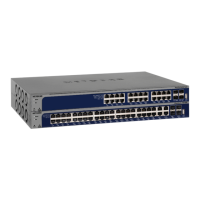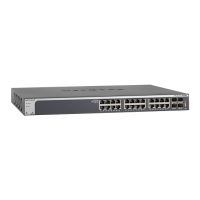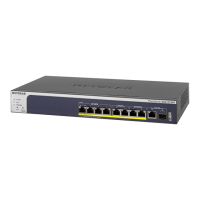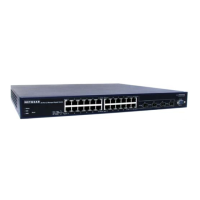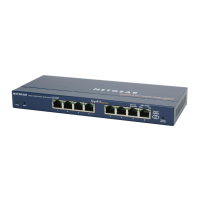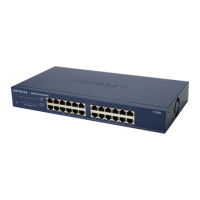Manage Device Security
330
XS708T, XS712Tv2, and XS716T Smart Managed Pro Switch User Manual
3. In the address field of your web browser, enter the IP address of the switch.
If you do not know the IP address of the switch, see Change the Default IP Address of the
Switch on page 10.
The login window opens.
4. Enter the switch’s password in the Password field.
The default password is password.
The System Information page displays.
5. Select Security > ACL > Advanced > IP ACL.
The IP ACL page shows the current size of the ACL table compared to the maximum size
of the ACL table. The current size is equal to the number of configured IPv4 and IPv6
ACLs plus the number of configured MAC ACLs. The maximum size is 100.
The Current Number of ACL field displays the current number of all ACLs configured on
the switch.
The Maximum ACL field displays the maximum number of IP ACLs that can be
configured on the switch.
6. In the IP ACL ID field, specify the ACL ID or IP ACL name, which depends on the IP ACL
type. The IP ACL ID is an integer in the following range:
• 1–99. Creates a basic IP ACL, which allows you to permit or deny traffic from a source
IP address.
• 100–199. Creates an extended IP ACL, which allows you to permit or deny specific
types of Layer 3 or Layer 4 traffic from a source IP address to a destination IP
address. This type of ACL provides more granularity and filtering capabilities than the
standard IP ACL.
• IP ACL Name. Create an IPv4 ACL name string that is up to 31 alphanumeric
characters in length. The name must start with an alphabetic character.
Each configured ACL displays the following information:
• Rules. The number of rules currently configured for the IP ACL.
• Type. Identifies the ACL as a basic IP ACL (with ID from 1 to 99), extended IP ACL
(with ID from 100 to 199), or a named IP ACL.

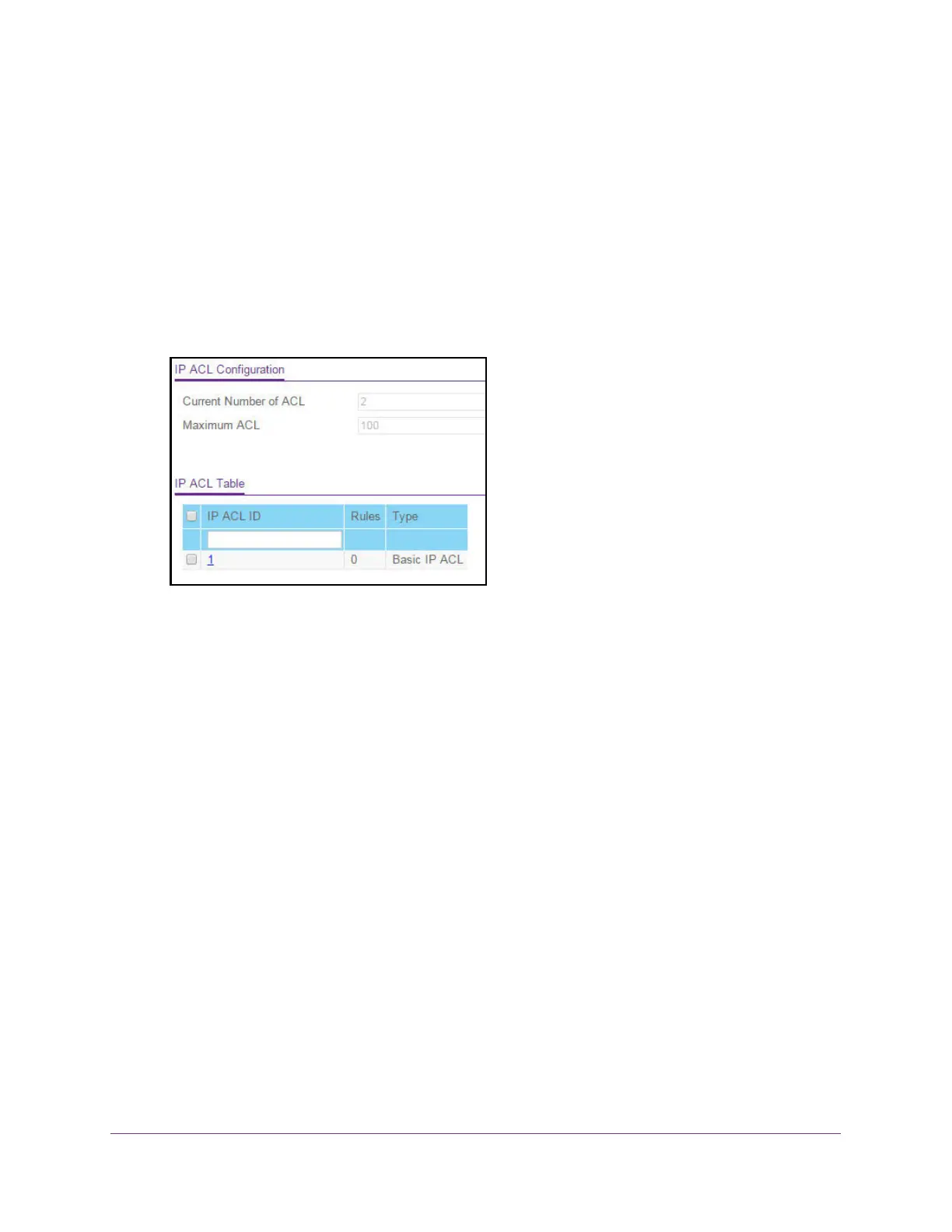